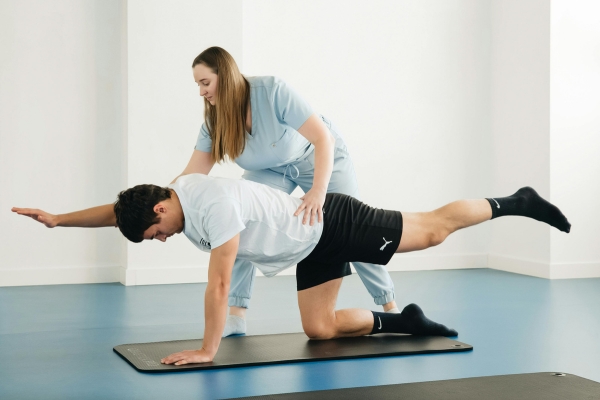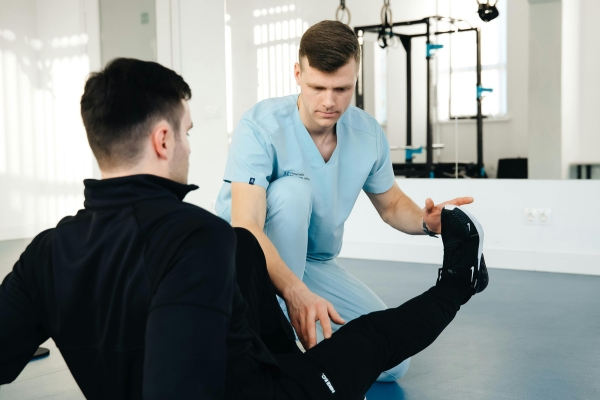Table of Content
- Introduction
- How Bone Structure Changes Over Time
- The Role of Exercise in Bone Strength
- How Physiotherapy Supports Bone Health
- Common Bone-Related Conditions Managed with Physiotherapy
- Types of Exercise that Improve Bone Density
- Importance of Posture, Balance and Joint Alignment
- Benefits of Physiotherapy Home Service for Bone Care
- What to Expect in a Physiotherapy Session
- Go Run Go Physio – Supporting Bone Health Locally
- FAQs
- Conclusion
Introduction
As we age or recover from injury, one of the most overlooked aspects of health is our bone structure. Healthy bones are critical for daily mobility, balance, and independence. Fortunately, exercise and physiotherapy are two highly effective tools for maintaining and improving bone strength.
Whether you’re managing osteoporosis, recovering from a fracture, or aiming to stay active in your later years, a tailored approach that combines physiotherapy melbourne with movement therapy can help reinforce your skeletal framework.
Let’s examine how movement, when guided correctly, impacts your bones from the inside out.
How Bone Structure Changes Over Time
Our bones are not static. They continuously remodel themselves through a cycle of breakdown and rebuilding. However, factors like age, inactivity, poor posture, and injury can interfere with this natural process.
Bone density tends to:
- Peak in your 20s to early 30s
- Decline gradually from age 40 onwards
- Decrease more rapidly in post-menopausal women
Loss of bone mass increases the risk of:
- Fractures
- Stooped posture
- Reduced mobility
- Spinal compression
With the right physical intervention, these changes can be slowed, managed, or even reversed in some cases.
The Role of Exercise in Bone Strength
The impact of exercise on bone structure is not just mechanical. It’s biological. Weight-bearing activities create tiny amounts of stress on bones, which stimulates bone-building cells (osteoblasts) to reinforce the structure.
Weight-bearing activities include:
- Walking
- Jogging
- Hiking
- Resistance training
- Dancing
- Pilates or body-weight exercises
These activities:
- Increase bone mineral density (BMD)
- Improve balance and prevent falls
- Enhance joint flexibility
But exercise alone isn’t enough. That’s where targeted physiotherapy becomes essential.
How Physiotherapy Supports Bone Health
Physiotherapy is more than rehab. It involves personalised assessments and treatments that promote recovery and strengthen the musculoskeletal system.
A physiotherapist will:
- Identify postural or structural weaknesses
- Provide safe loading exercises
- Address gait or movement irregularities
- Guide progress without overloading joints or bones
Key services offered:
- Post-injury rehabilitation
- Osteoporosis-specific programmes
- Joint mobilisation
- Balance retraining
In cities like Melbourne, physiotherapy home service options also make it more convenient for people to stick to their recovery plans consistently.
Common Bone-Related Conditions Managed with Physiotherapy
Several conditions affecting bone health can benefit from physiotherapy interventions:
1. Osteoporosis
- Gradual bone thinning
- Increased fracture risk
- Managed with strengthening, balance, and resistance training
2. Osteopenia
- Early-stage bone loss
- Reversible with guided exercise and dietary changes
3. Fractures
- Especially in the wrist, spine, or hip
- Physiotherapy aids in safe mobilisation and recovery
4. Arthritis
- While it affects joints, chronic inflammation can lead to changes in bone alignment
5. Postural deformities
- Kyphosis or scoliosis may strain spinal bones
Types of Exercise That Improve Bone Density

Not all exercises have the same effect on bone health. Some promote strength, while others support coordination and posture.
Effective exercise categories:
- High-impact weight-bearing (e.g., running, jumping)
- Low-impact weight-bearing (e.g., brisk walking, stair climbing)
- Resistance training (e.g., lifting weights, resistance bands)
- Stability and balance exercises (e.g., tai chi, yoga)
Incorporating a mix of these, under physiotherapist supervision, offers the best results.
Importance of Posture, Balance and Joint Alignment
Muscle imbalances, poor posture, and weak core strength all influence how pressure is distributed through the skeleton.
Physiotherapy focuses on:
- Correcting spinal alignment
- Improving balance to prevent falls
- Re-educating movement patterns
- Strengthening postural muscles
This not only reduces injury risk but supports even loading on bones during daily activities or exercise.
Benefits of Physiotherapy Home Service for Bone Care
For older adults or those recovering from fractures, getting to a clinic isn’t always practical. Physiotherapy home service allows care to come directly to the patient.
Benefits include:
- One-on-one attention
- Safer environment for balance exercises
- Personalised treatment using home equipment
- Greater adherence to treatment plans
Go Run Go Physio offers this service in Melbourne, providing convenience without compromising quality of care.
What to Expect in a Physiotherapy Session
Your physiotherapy journey begins with a comprehensive assessment to understand:
- Your medical history
- Bone density and posture
- Current mobility level
- Fall risk and muscle strength
You may then be guided through:
- Gentle warm-up exercises
- Tailored strength and balance routines
- Education about joint protection and safe movement
- Progress tracking over time
Physiotherapists will adjust your program as you build strength, ensuring sustainable long-term results.
Go Run Go Physio – Supporting Bone Health Locally
Go Run Go Physio is committed to helping the community stay mobile, active and confident at all ages.
Their team works with individuals:
- Recovering from fractures or surgeries
- Managing chronic bone conditions
- Wanting to stay independent in later years
With services like physiotherapy home service and clinic-based programs, they make support accessible and personal.
FAQs
Q1. Can physiotherapy improve bone density?
Answer: Yes, guided physiotherapy using resistance and weight-bearing techniques can help maintain or improve bone mineral density, especially in combination with a suitable exercise routine.
Q2. What type of physiotherapy is best for osteoporosis?
Answer: Osteoporosis-friendly physiotherapy focuses on gentle resistance training, posture correction, and fall prevention strategies. All exercises are tailored to reduce fracture risk.
Q3. How soon can I see results from physiotherapy for bone health?
Answer: Bone density improvements may take 4–6 months to show on scans, but improvements in strength, posture, and mobility can be noticeable within a few weeks.
Q4. Is it safe for seniors to do weight-bearing exercises?
Answer: Yes, with guidance from a physiotherapist. The intensity and type of exercise are adjusted to suit the individual’s condition and medical background.
Q5. Can I get physiotherapy at home in Melbourne?
Answer: Yes, Go Run Go Physio provides physiotherapy home service, making recovery easier for those unable to travel.
Q6. Does exercise help prevent fractures?
Answer: Regular movement strengthens not just bones but muscles and coordination, reducing the chance of falls and fractures.
Q7. Are physiotherapists trained to handle bone-related conditions?
Answer: Absolutely. Physiotherapists are highly trained in musculoskeletal care and routinely work with conditions such as osteoporosis, arthritis, and post-fracture rehab.
Conclusion
Bone health is not just about supplements or scans it’s about movement, structure, and professional support. When tailored exercises are combined with expert-led physiotherapy, your bones become stronger, your movements safer, and your quality of life improves.
Whether you’re living with osteoporosis, recovering from injury, or aiming to stay mobile in your later years, physiotherapy melbourne services like Go Run Go Physio provide the right guidance to keep your body aligned and your bones resilient.
By choosing regular exercise and physiotherapy, you’re making an investment in long-term bone strength — one step at a time.

